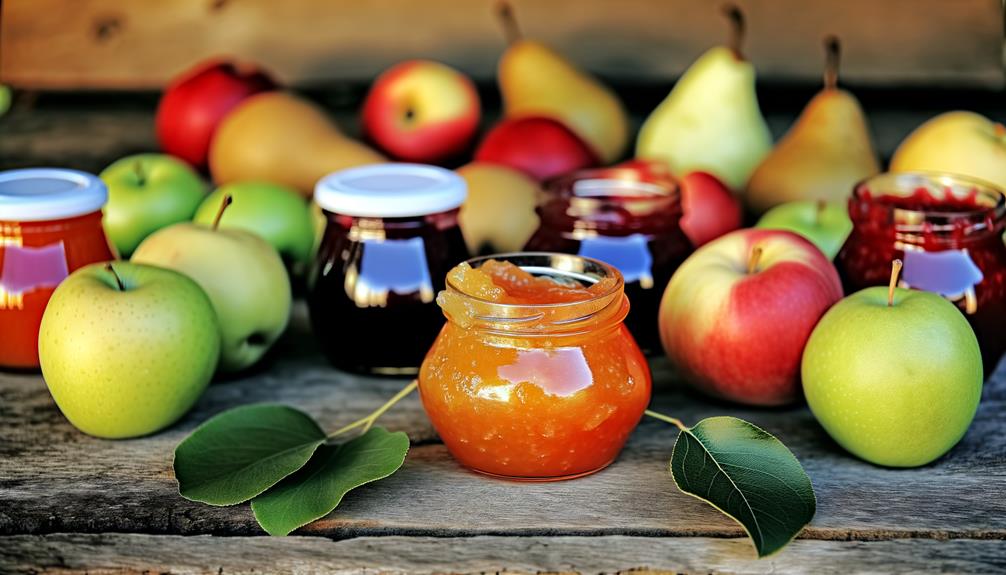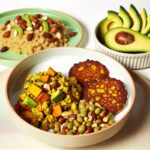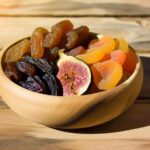You’ve probably never tasted anything quite as magical as a spoonful of homemade fruit butter. These plant-based delights are not just spreads; they’re a testament to the power of simplicity and flavor. By slowly simmering fruits until they transform into thick, aromatic spreads, you’re engaging in a culinary practice that elevates the essence of the fruit without the need for artificial preservatives or excessive sweeteners. Whether you’re spreading it on a warm slice of toast or stirring it into your morning vegan yogurt, fruit butters offer a healthier alternative that caters to your taste buds and well-being. The journey to making your own fruit butter is filled with choices – from selecting the perfect fruit combinations to mastering the cooking process. And while the basics are straightforward, the variations are endless, inviting you to explore a world where your kitchen becomes a canvas for your plant-based creations. Why settle for store-bought spreads when the secrets to crafting the perfect fruit butter lie just beyond this introduction?
Key Takeaways
- Fruit butters are plant-based spreads made by simmering fruits until they transform into thick, aromatic spreads.
- Homemade fruit butters can be adjusted in sweetness using alternatives like honey or maple syrup.
- Choosing organic and seasonal fruits for making fruit butter ensures optimal flavor.
- Fruit butters can be used in a variety of creative ways, such as in pastries, salad dressings, and glazes for vegetables.
Understanding Fruit Butters
Diving into the world of fruit butters, you’ll discover a delightful, plant-based spread that transforms simple fruits into rich, flavorful condiments without the need for added pectin. This magical transformation begins with your favorite fruits — be it succulent stone fruits, zesty berries, or exotic tropical varieties. Each fruit type offers a unique pathway to creating these lush spreads, emphasizing the natural sweetness and character of the produce.
By simmering fruits down to a paste-like consistency, you create a sweet, versatile spread that can elevate any meal, from breakfast to dessert. Unlike commercial spreads laden with artificial preservatives, fruit butter celebrates the essence of the fruit, allowing its natural flavors to shine. You have the freedom to adjust the sweetness using ethical alternatives like honey or maple syrup, ensuring every batch aligns with your values and dietary preferences.
Storing your homemade fruit butter is straightforward, with options to refrigerate, freeze, or can for longer shelf life. This not only reduces food waste but also empowers you to share your culinary creations with others, spreading joy and nourishment. Embrace the art of making fruit butter and enrich your table with flavors that care for the planet and nourish the soul.
Making Your Own Fruit Butter
After understanding the essence of fruit butters, let’s explore how to craft your own, harnessing the vibrant flavors of nature’s bounty right in your kitchen. Making fruit butter is not just a culinary activity; it’s a way to create delectable, plant-based treats that you can share with your loved ones, adding a touch of homemade warmth to their meals. Here are three key steps to ensure your fruit butter is flavorful and ethically made:
- Choose Your Fruit Wisely: Opt for organic, seasonal fruits. Peel stone fruits and for berries, remember to puree and sieve for a smooth texture.
- Mindful Sweetening: Experiment with natural sweeteners like maple syrup or honey, or consider Splenda Granular for a sugar-free option.
- Test for Doneness: Ensure your fruit butter doesn’t weep liquid at the edges on a chilled plate. This simple test guarantees the perfect consistency for spreading or mixing.
The Best Fruits for Butters
When selecting the best fruits for your homemade butter, opt for varieties like apples, pears, and peaches that naturally cook down into a creamy, smooth texture. These fruits, along with nectarines and apricots, are ideal for creating rich, flavorful butters that can delight the taste buds of anyone you’re serving. They provide a smooth base that’s both ethical and plant-based, catering to a variety of dietary preferences and needs.
For those seeking a bit more adventure in their culinary creations, berries such as strawberries, blueberries, and raspberries offer a vibrant twist. Though they may require an extra step of pureeing and straining, the effort is well worth it for the burst of flavor they contribute. Meanwhile, tropical fruits like mangoes and pineapples can introduce an exotic flair to your fruit butters, making them stand out at any table.
Don’t shy away from experimenting with stone fruits like plums and cherries, or even combining different fruits to concoct unique, personalized flavors. Such creativity not only allows you to explore the vast potential of fruit butters but also to craft delightful, thoughtful offerings for those you care about.
Cooking Tips and Tricks
To achieve the perfect thickness for your fruit butter, cook the mixture until it becomes thick and sticky, steering clear of adding pectin, which is unnecessary for this delightfully creamy spread. Here are a few more tips to ensure your fruit butter is a hit:
- For a Smooth Texture: If you’re working with seedy berries, don’t hesitate to puree your fruit butter and pass it through a sieve. This extra step will give you a velvety smooth spread that’s perfect for layering on toast or swirling into oatmeal.
- Sweetening Naturally: Consider using natural sweeteners like maple syrup, honey, or even Splenda Granular for those watching their sugar intake. These alternatives not only add depth of flavor but also make your fruit butter more versatile, pairing beautifully with a variety of dishes.
- Testing for Doneness: To ensure your fruit butter has reached the ideal consistency, drop a spoonful on a plate. If no liquid seeps from the edges, you’re good to go. Remember, processing your fruit butter in a boiling water bath will allow you to safely store it at room temperature, ensuring you can enjoy this homemade delight for up to a year.
Creative Uses for Fruit Butters
Unlock the potential of your kitchen creations by incorporating fruit butters into your recipes, adding a rich, fruity depth that’ll transform ordinary dishes into gourmet experiences. Imagine delighting your guests with pastries or sandwich cookies filled with the lush, vibrant flavors of fruit butters. Each bite will offer a burst of fruity flavor, setting your treats apart.
You can also use fruit butters as a low-fat alternative in baking, infusing your goods with moisture and a delightful fruitiness without the added fats. It’s a healthier option that doesn’t compromise on taste or texture, perfect for serving your loved ones.
For those who enjoy experimenting with savory dishes, fruit butters offer a unique twist. Incorporate them into salad dressings or marinades to introduce a sweet and savory element that’s sure to surprise and please. They’re also ideal for glazing meats and vegetables, adding a layer of sweet and tangy flavor that enhances the natural tastes of your ingredients.
Lastly, imagine the joy of slicing into a cake, only to discover a hidden layer of fruit butter that adds a delightful fruity surprise. It’s these thoughtful touches that turn dining into a true experience for those you serve.
Frequently Asked Questions
What Kind of Fruit Butters Are There?
You’re curious about the variety out there, aren’t you? Well, you’ve got apple, cherry, fig, mango, and pumpkin to choose from. They’re all ethical, plant-based, and bursting with flavor, perfect for sharing.
Which Fruit Is Butter?
You’re asking about a fruit named “butter,” but there isn’t one. Instead, fruit butters are spreads made from pureed fruit, cooked down till thick. They’re delicious, vegan-friendly, and perfect for sharing with loved ones.
What Do You Eat Fruit Butter With?
You can enjoy it with toast, stir it into vegan yogurt, use it as a filling for pastries, top pancakes or waffles, mix into dressings, or pair with vegan cheese for a sweet and savory treat.







